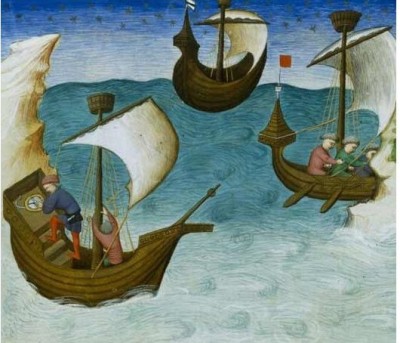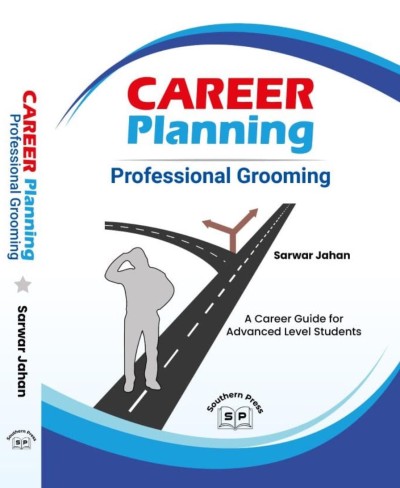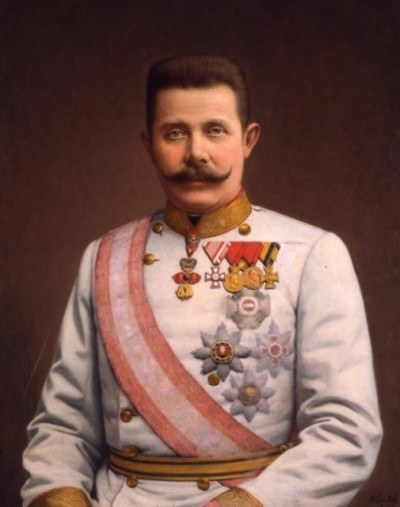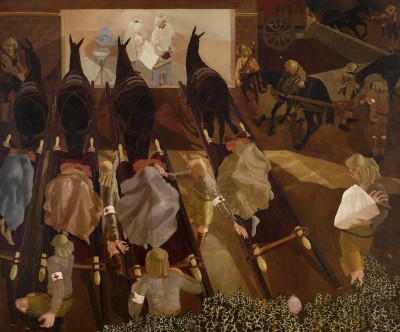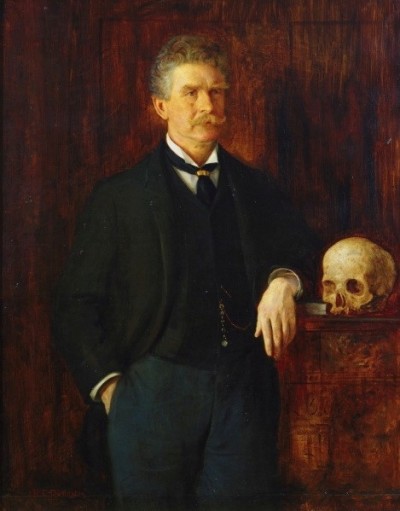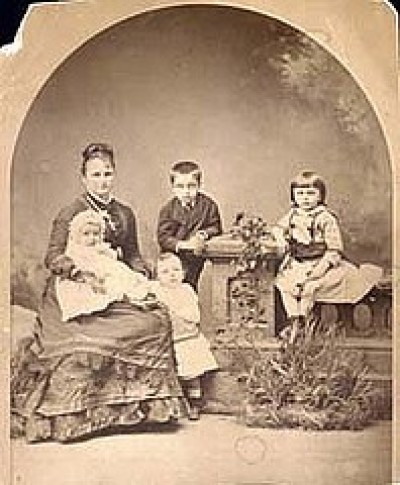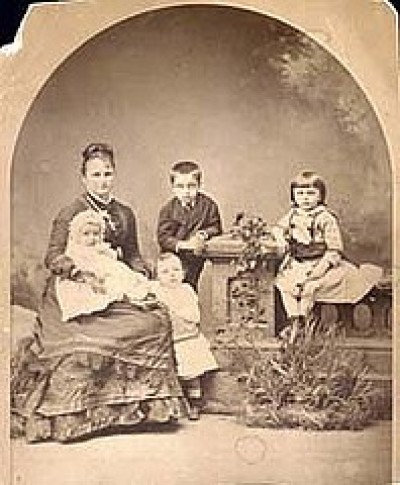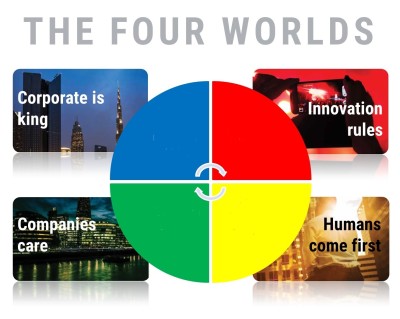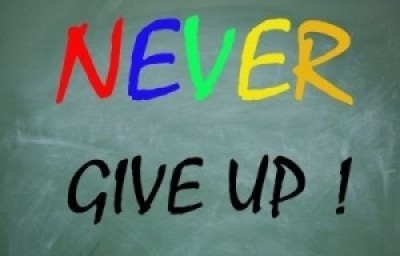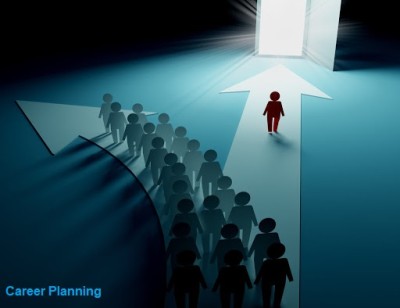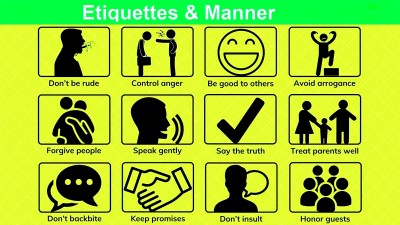Course description
Europeans & Amerindians – A Fatal Meeting
Fifty thousand years ago, many people originated from the plains and forests where Europe and Asia meet (around the Ural Mountains). From there they went north, south, east and west, populating the lands they found.
Those who went west would end, many generations later, in Europe. Those who went north and east into Siberia were fewer and they stayed hunter-gatherers and nomads: not stopping in one place to farm. The Europeans and the Siberians were to meet again though.
 There is only a small area of sea between the far eastern coast of Asia and the western one of Alaska in the Americas. It's about fifteen kilometres and, in the last Ice Age, it was frozen solid. This allowed Siberians on foot or in small, simple boats to cross from Asia to the Americas. The children and grand-children of these Siberian migrants would populate both North and South America as they drifted south into this new continent.
There is only a small area of sea between the far eastern coast of Asia and the western one of Alaska in the Americas. It's about fifteen kilometres and, in the last Ice Age, it was frozen solid. This allowed Siberians on foot or in small, simple boats to cross from Asia to the Americas. The children and grand-children of these Siberian migrants would populate both North and South America as they drifted south into this new continent.
At first, they adapted to the intense cold of the High North, becoming fatter and rounder to resist the low temperatures; learnt to build houses from ice and snow; and lived by catching fish and seals through holes cut in the ice.
Some moved south onto the great North American plains where they became thin and long-legged so that they could run quickly across the green carpet of these endless grasslands when hunting buffalo or deer. These tribes made their homes and their clothes from the skins of the animals they killed.
Others adapted to the jungles, still others to the high mountains. And a few, just a few, developed agriculture. They grew maize corn and built temples and cities that continue to surprise modern anthropologists. Around 1400 A.D., Mexico City (Tenochtitlan) had a population of two million, bigger than Rome or London at the time. Around then, the Incas were also making a sophisticated, agrarian society and building huge temples of stone in honour of their sun god.
But what of Europe in 1400? What had become of the Europeans, the distant cousins of the American Indians? Europe, little by little, had become crowded. It was a dead end. People arrived constantly, especially from the East but the West was blocked by the Atlantic Ocean. As the European 'subcontinent of Asia' filled up, its people turned more and more to farming. The land here was good but not endless. The ability to defend land had become very important. Or the ability to take land from others. The Europeans quickly became skilled in the military arts – they got good at killing people.
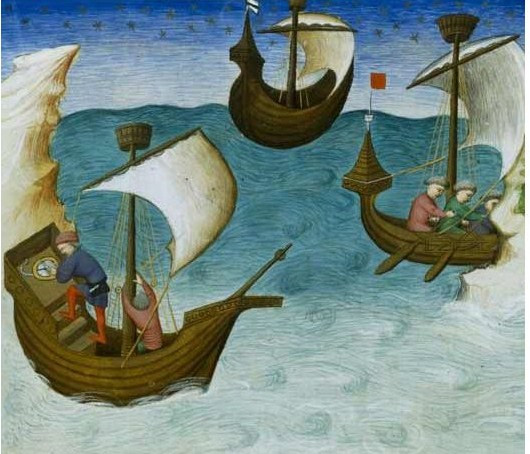 Trade also grew and anyone who could reach places like India, China, Japan or Indonesia and return to Europe with a ship full of silk, tea or opium would soon be very rich. If you could do it once a year, you became powerful, telling kings what to do. The problem was getting there and back safely. On the way you might have to pay taxes to several, probably Muslim, princes and still take the chance of being robbed by bandits on land or pirates at sea. In Europe, rich men and kings were always interested in supporting anyone who thought they could find a way to the 'Indies' (Far East) which avoided all these problems.
Trade also grew and anyone who could reach places like India, China, Japan or Indonesia and return to Europe with a ship full of silk, tea or opium would soon be very rich. If you could do it once a year, you became powerful, telling kings what to do. The problem was getting there and back safely. On the way you might have to pay taxes to several, probably Muslim, princes and still take the chance of being robbed by bandits on land or pirates at sea. In Europe, rich men and kings were always interested in supporting anyone who thought they could find a way to the 'Indies' (Far East) which avoided all these problems.
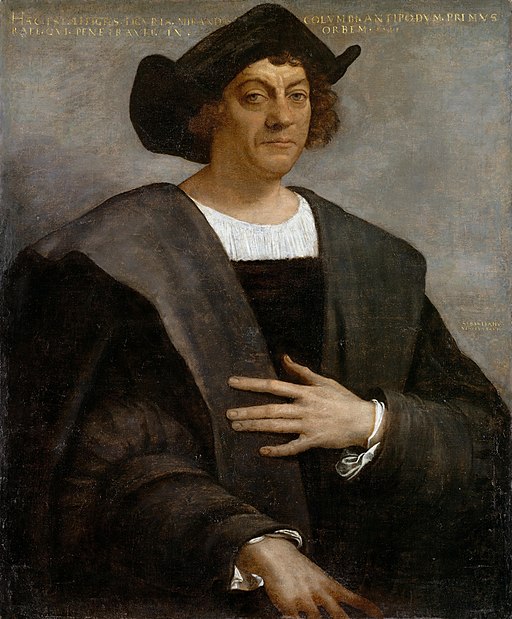 Christopher Columbus was just such a man. He had a theory that, if the world was round, you could reach India going west just as much as going east. Columbus' theory was sound and should have worked but, between Europe and India going westwards, lay the Americas, a huge double continent. When Columbus arrived in this new world, he thought the natives, with their brown skin and straight, black hair, were 'Indians' and so the name stuck for the original inhabitants of the Americas.
Christopher Columbus was just such a man. He had a theory that, if the world was round, you could reach India going west just as much as going east. Columbus' theory was sound and should have worked but, between Europe and India going westwards, lay the Americas, a huge double continent. When Columbus arrived in this new world, he thought the natives, with their brown skin and straight, black hair, were 'Indians' and so the name stuck for the original inhabitants of the Americas.
Once Columbus had landed in the Americas, many other Europeans followed. The distant cousins, the 'Siberians' and the 'Europeans', who had come from the same part of Central Asia, now met up again on the other side of the world. For the Europeans, it was a new beginning as they went out into this seemingly limitless land. The Europeans ate better and grew taller than they had in Europe but the Indians died in great numbers. They died of new diseases they could not fight, diseases that the Europeans and their African slaves brought with them. They died of alcoholism, which hit them especially hard. And they were killed by the violent European colonists.
 The earliest white explorers in South and Central America were of the worst kind. They were mercenaries. Often illiterate, they had climbed to the top because of their ability to fight and kill. They came to the Americas for one thing: gold. They were prepared to torture and kill to get it. Both the Indians and, if need be, their own companions.
The earliest white explorers in South and Central America were of the worst kind. They were mercenaries. Often illiterate, they had climbed to the top because of their ability to fight and kill. They came to the Americas for one thing: gold. They were prepared to torture and kill to get it. Both the Indians and, if need be, their own companions.
In North America, the nomadic Indians were all but destroyed. In South America, where Indian numbers were higher and communities were often agricultural, more survived; countries like Guatemala and Ecuador today have populations that are 80% indigenous. However, when the old cousins from Central Asia met again in the Americas, it was the Europeans, with better technology and higher resistance to common diseases, who won out.
If you want to watch some videos on this topic, you can click on the links to YouTube videos below.
If you want to answer questions on this article to test how much you understand, you can click on the green box: Finished Reading?
Videos :
1. Ural Mountains (1:36)
2. How the First Americans got There (4:44)
3. Tenochtitlan, the Impossible City (5:22)
4. The Rise and Fall of The Inca (5:46)
5. Who is European? (10:00)
6. European Conquest of The Americas (9:11)
7. European Explorers (3:49)
8. Christopher Columbus (3:17)

 There is only a small area of sea between the far eastern coast of Asia and the western one of Alaska in the Americas. It's about fifteen kilometres and, in the last Ice Age, it was frozen
There is only a small area of sea between the far eastern coast of Asia and the western one of Alaska in the Americas. It's about fifteen kilometres and, in the last Ice Age, it was frozen Trade also grew and anyone who could reach places like India, China, Japan or Indonesia and return to Europe with a ship full of silk, tea or opium would soon be very rich. If you could do it once a year, you became powerful, telling kings what to do. The problem was getting there and back safely. On the way you might have to pay taxes to several, probably Muslim, princes and still take the chance of being robbed by
Trade also grew and anyone who could reach places like India, China, Japan or Indonesia and return to Europe with a ship full of silk, tea or opium would soon be very rich. If you could do it once a year, you became powerful, telling kings what to do. The problem was getting there and back safely. On the way you might have to pay taxes to several, probably Muslim, princes and still take the chance of being robbed by Christopher Columbus was just such a man. He had a theory that, if the world was round, you could reach India going west just as much as going east. Columbus' theory was
Christopher Columbus was just such a man. He had a theory that, if the world was round, you could reach India going west just as much as going east. Columbus' theory was  The earliest white explorers in South and Central America were of the worst kind. They were
The earliest white explorers in South and Central America were of the worst kind. They were